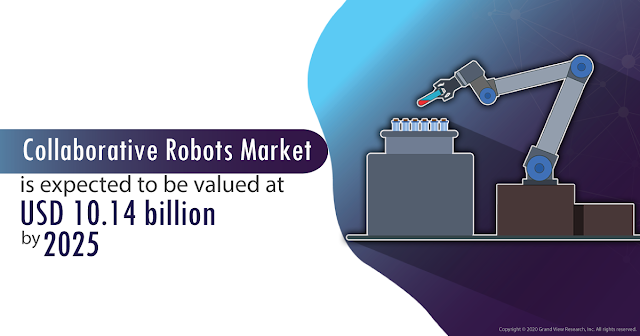16 July 2020: Implementation of collaborative robots in automation has increased due to R&D involved in the use of these robots possessing embedded force and torque sensing technology. Interaction with humans in a shared workspace in physical world is a major reason for the development of collaborative robot or cobot. Growing investments in automation of manufacturing processes and adoption in the Small and Medium Enterprises (SMEs) are the major factors propelling the growth of the market. Emergence of robots working along with humans in areas like smart parts assembly and electronics product assembly further fuels the demand.
Ability to Optimize Low Weight Collaborative Processes Drives Segment Growth
Based on payload capacity, the collaborative robot market is segmented into up to 5kg, up to 10kg, and above 10kg. In 2018, cobots with 5kg payload capacity segment held the largest share of the market due to flexibility and lightweight capacity of the machine to optimize low-weight collaborative processes such as picking, testing, and placing. Cobots above 10kg payload capacity are expected to witness a significant growth due to its capacity to handle bigger tasks requiring reliability, precision, and collaborating heavier-weight processes.
The application segment is further categorized into pick and place, assembly, handling, quality testing, packaging, gluing and welding, machine tending, and others. The assembly application segment accounted for the largest market share in 2018 due to its ability of combining both easy and repetitive work along with more complex assembly processes.
Increasing application and adoption of pick and place collaborative robot is also an important factor driving the growth of the segment. Cobots are used in pick and place application to increase accuracy and reduce shrinkage while handling inventory across verticals. Pick and place robots are small in size and lightweight and hence can be deployed in limited space.
Market Insights
There is a high demand for collaborative robots in various industrial applications due to their high payload carrying capacity. The cobots are required as an assisting device to humans and assist in increasing the efficiency, along with the quality of work done.
Cobots can work in collaboration with humans due to the development of next-generation of collaborative robots that are capable of moving, seeing, and reacting to the environment. This is largely responsible for high demand of cobots across several industry verticals along with logistics, leading to the growth of the market.
Some of the leading companies in the collaborative robots market are DENSO Robotics; ABB Group; EPSON Robots; F&P Robotics AG; Fanuc Corporation; MRK-Systeme GmbH; Energid Technologies Corporation; KUKA AG; Precise Automation, Inc.; Robert Bosch GmbH; Rethink Robotics, Inc.; and Yaskawa Electric Corporation.




1 comment:
I work as the head of the industrial operations of a top automobile manufacturing company. COBOTS are being used in assembling the parts of the automobile with precision. This has dramatically reduced the need for the workforce in our industrial operations. We make use of COBOTS manufactured by Robert Bosch and highly satisfied by its performance.
Post a Comment